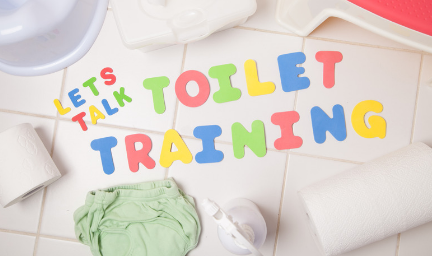
Toilet Training: Tips for Success with Your Little Ones
Toilet training is one of the important aspects in child’s development, making a step towards greater independence and self-reliance. It can be long daunting process for parents and children, however a patient and positive approach can make this transition smoother and more successful. Here are some practical tips to help guide you through toilet training your child. Additionally, you can utilize e-resources for toilet training tips from nurseriesandschools.org.
1. Timing is everything
The key element in making your child learn is recognizing when he/she is ready. Most children show signs of readiness between 18 to 24 months, but some may not be ready until 3 years old. Signs of readiness include:
- Staying dry for longer periods.
- Showing interest in using the toilet.
- Communicating the need to go.
- Disliking dirty diapers.
It's important to remember that every child is different, and pushing them before they’re ready can lead to frustration and setbacks.
2. Create a Routine
Create a consistent routine which will help children understand what needs to be done. Set regular times for bathroom visits once they wake up or after meals and before bedtime. Regularity helps build habits and makes it easier for your child to adapt the process.
3. Use Positive Reinforcement
Positive encouragement will lead to desired behaviour of children. Celebrate their success with praise, stickers, certificates and more. Utilize and download e-resources from nurseriesandschools.org. Smalls steps like sitting on the toilet, washing hands should be praised. Don’t punish or shout for any accidents as this can create anxiety for them to use the toilet.
4. Equip and Empower
Make the bathroom fun and welcoming area for your kid. For eg. Use a
child-sized potty seat or a different seat that fits on the regular toilet
along with some steps. Keep your bathroom decorated or keep some fun toys that
makes your child want to go bathroom. Let your children choose their own toilet
seat to increase their interest.
5. Dress for Success
Cloths that are easy to remove make it less stressful for you and your child. Avoid wearing outfits that are with buttons, belts or zippers. Elastic waistbands cloths are suitable during this period.
6. Teach Hygiene Early
Incorporate good hygiene habits from the start. Teach your child to wipe properly (front to back for girls, flush toilet and wash hands. Nurseriesandschools.org provides worksheet with toilet procedure flashcards, reward charts and more. Make hand washing fun with songs or special soaps to encourage compliance.
7. Night time Training
Night time dryness usually takes longer to achieve than daytime control. Using waterproof mattress protectors and limiting liquids before bedtime will help your child to avoid the urge to pee or poop. Praise your child for dry nights, but be prepared for occasional accidents.
8. Involve Caregivers
Involving caregivers in the routine can help your child to learn how to use the toilet in a proper way. Ensure all caregivers are on the similar page for toilet training and procedures. This may include family members, babysitters and day care providers. Consistency is key; make sure all of them are following same routines for your kids to be toilet trained.
Final Thoughts
Toilet training is a journey that requires patience, encouragement, and a positive attitude. By recognizing your child’s readiness, establishing a consistent routine, and celebrating their successes, you can help them navigate this important developmental milestone with confidence. Remember, every child progresses at their own pace, so remain supportive and patient throughout the process. Happy toilet training!


Submit your comment